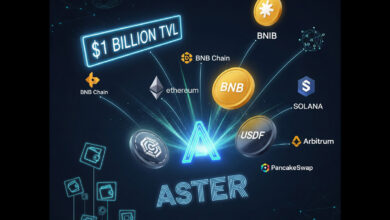How to Capitalize on Stablecoin Growth and Policy Wins for Profit

Introduction
The cryptocurrency market continues to evolve under the weight of regulatory pressure, declining hype cycles, and an overall perception of risk heightened by bear market conditions. Yet, amid this backdrop of uncertainty, contrarian investors aren’t stepping away—rather, they’re stepping in. They recognize that deeply embedded within the market shifts are early indicators of asymmetric opportunities. These opportunities often emerge within overlooked sectors that can power the next growth cycle. Infrastructure development, stablecoin adoption, and long-term protocol upgrades are gaining traction quietly. Investors who understand these strategic developments can establish advantageous positions before the next wave of market optimism returns. This is the time to focus on utility, scalability, and tokenomics that support real-world value, instead of chasing purely speculative gains.
Coinbase Q2 Miss and the Hidden Stablecoin Bull Signal
Coinbase’s disappointing Q2 earnings report might appear to reflect broader market weakness, reinforcing the assumption that institutional and retail enthusiasm toward crypto is fading. However, a closer look into transaction data reveals a more nuanced picture. While trading volumes in speculative altcoins are down, there has been a noticeable uptick in activity associated with stablecoin transfers and cross-border settlement functionality.
Stablecoins like USDC and USDT have become core to the crypto economy’s utility layer. Rather than acting as speculative assets, they are now embedded into decentralized finance (DeFi) platforms, remittance services, and payment processing infrastructures. Coinbase, by facilitating stablecoin transactions and earning revenue from transaction fees and interest on USDC reserves, continues to generate reliable income even during downturns. This showcases the robustness of infrastructure-first models in contrast to speculative approaches.
As stablecoin velocity increases—measured by on-chain transaction frequency and volume—the Associated yield becomes increasingly attractive to exchanges and financial service providers. This shift from speculation to utility mirrors the infrastructural growth phase that most disruptive technologies experience. Much like internet innovations in the late ’90s transitioned from hype to utility, stablecoins are set to power decentralized fintech in the coming decade. Thus, Coinbase’s operations highlight a bullish undertone hidden within the bearish façade.
Those looking to deepen their approach during volatile times should explore our in-depth Bear Market guide to better understand how to build positions around such resilient trends.
Ethereum’s Evolution: From Layer 1 to Quantum-Ready Network
The developers behind Ethereum are not resting on recent gains from staking adoption or EIP upgrades. Instead, they are advancing toward a concept of a “Lean Ethereum” — a vision that positions Ethereum not only as the central hub of decentralized finance but also as a network prepared to resist future systemic threats, including quantum computing.
This forward-looking upgrade includes post-quantum cryptographic standards and significantly more efficient processing capabilities. With the rise of quantum computing on the horizon, legacy cryptography used in blockchain protocols could quickly become obsolete. Proactively integrating post-quantum resistance enhances Ethereum’s appeal to developers, users, and institutions who view data security and future-proofing as paramount concerns.
More importantly, this innovation reflects Ethereum’s evolution into a modular ecosystem. It increasingly acts as the security consensus layer for Layer 2 (L2) scaling solutions such as Arbitrum, Optimism, and Polygon. These L2 solutions offer faster transactions and lower costs while securely anchoring to Ethereum mainnet.
Additionally, restaking protocols like EigenLayer allow ETH stakers to earn supplemental rewards by securing new services without sacrificing base-chain security. This expansion of yield infrastructure positions Ethereum as the bond market of Web3 — offering diversified risk-adjusted returns within a single ecosystem.
Investors should look beyond the ETH token alone and consider supporting projects contributing to or building on Ethereum’s quantum-ready roadmap, such as zero-knowledge (zk) rollups and decentralized developer infrastructure platforms. All signs indicate Ethereum is not only solidifying its place in the blockchain hierarchy but preparing for a much more resilient and institutionally accepted future.
JPMorgan’s Jamie Dimon: From Skeptic to Stablecoin Strategist
JPMorgan CEO Jamie Dimon once dismissed cryptocurrencies as a dangerous distraction. However, recent statements and actions from JPMorgan suggest a significant pivot in perspective — particularly around stablecoins. Despite regulatory murkiness, the institution is ramping up its development of blockchain-based financial tools, including its own version of a bank-issued stablecoin, JPM Coin, used for intra-bank settlements and now with measured expansion into cross-border transactions.
This evolution is emblematic of a broader institutional shift. Stablecoins have demonstrated their practical value more convincingly than any other digital asset class. They combine the predictability of fiat with the speed and programmable capabilities of blockchain. For banks and large financial players, the operational efficiency—especially in global remittance and trade finance—is too compelling to ignore.
As tier-one financial institutions enter the space, the next frontier lies in regulatory-compliant stablecoin systems that integrate know-your-customer (KYC) standards and traditional legal frameworks. Platforms with built-in regulatory tooling, compliance options, and fiat on/off ramps are likely to win favor with enterprise users.
To stay ahead of the institutional curve, savvy investors are positioning in the stablecoin infrastructure — including regulatory consulting firms, custodian wallet providers, and middleware that bridges bank-grade software with decentralized rails. This marks the dawn of a new paradigm where blockchain finally steps into the future of traditional finance. For more perspectives on the institutional awakening, explore our Contrarian Investor thesis.
Solana, Liquid Staking, and ETF Acceleration — A Hidden Catalyst
Ethereum has long dominated attention, but Solana is emerging as the unexpected high-performance alternative. Known for its sub-second finality and low transaction costs, Solana’s ecosystem is increasingly attracting interest from institutions—particularly those exploring real-time trading tools and blockchain-based financial infrastructure.
One of the most promising developments is the rapid maturity of liquid staking derivatives on Solana. Protocols such as Marinade Finance and Jito are offering users the ability to stake SOL tokens without sacrificing liquidity, effectively unlocking yield generation while allowing assets to be re-deployed in DeFi strategies. This has caught the attention of asset managers and yield-seeking funds who prefer capital efficiency in a volatile market.
Adding another potential tailwind is growing speculation around Solana-based ETFs. Although still at the rumor stage, the possibility of a regulated investment vehicle tracking Solana’s ecosystem is increasingly likely given recent precedent set by Ethereum and Bitcoin ETF filings. A greenlight for any such product would significantly increase capital inflow, institutional validation, and long-term price stability for the SOL token.
Investors willing to front-run such developments should analyze on-chain adoption metrics and developer activity. Solana enjoys one of the fastest-growing NFT and gaming ecosystems. Combined with enterprise-grade TPS capability, it may soon become a preferred deployment layer for Web3 applications that need speed and interactivity over decentralization maximalism.
To understand the relationship between ETF anticipation and price dynamics, we recommend reviewing the historical Bitcoin Bull Market cycles as a reference point for what could unfold next in the Solana narrative.
Conclusion
As crypto investors transition away from the speculative mania of 2021, a strategic recalibration is underway. The new generation of wealth-building in crypto will come not from memecoins or fleeting hype, but from layered, fundamental investments in protocol infrastructure, yield mechanisms, and utility-based assets. Those still seeking fast returns may find themselves sidelined, while long-term thinkers quietly accumulate value-rich assets at favorable prices.
To summarize the smart positioning strategies for today’s environment:
- Stablecoins: Prioritize ecosystems that benefit from stablecoin transaction velocity and yield. Platforms facilitating enterprise-level stablecoin payments will be long-term winners.
- Ethereum L2s & Restaking: Zero in on DeFi security protocols, post-quantum Ethereum upgrades, and staking derivatives for diversified yield exposure.
- Solana Narrative: Closely monitor the ETF speculation and integrate exposure to liquid staking platforms and middleware infrastructure.
- Contrarian Thinking: Markets are cyclical. Be the investor who builds early while others hesitate — a true Contrarian Investor leverages silence in the market as an advantage.
The market will inevitably change, as will regulatory rules and macroeconomic conditions. What remains unchanged is that systemic resilience and innovation are the two true arbiters of long-term value in the crypto space. When the next bull run reignites, infrastructure-focused strategies will be the foundation upon which sustained returns are built. Now is the moment to look deeper, think longer-term, and position ahead of the wave.
Source link





